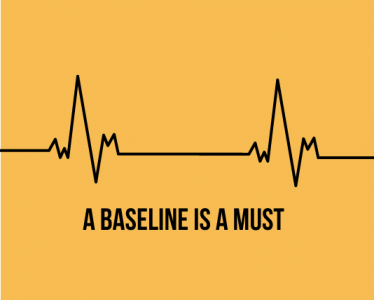Planning Poker is a widely used technique in Agile for estimating story sizes, but one of the most important aspects of making it effective is establishing a baseline. Without a common reference point, teams can struggle with inconsistent estimates, leading to misaligned expectations and inefficient sprint planning. In this article, we’ll explore how to establish a strong baseline for Planning Poker and why it’s critical to the success of your estimation process.
What Is a Baseline in Planning Poker?
A baseline in Planning Poker is a reference story that serves as a benchmark for comparing other stories. It helps the team anchor their estimates by providing a clear example of what a specific story point value represents. For example, a story assigned 5 points becomes the standard against which other stories are measured in terms of effort, complexity, or uncertainty.
Establishing this baseline ensures consistency, encourages alignment across the team, and reduces debates over estimation. It also simplifies the process of sizing new stories by eliminating ambiguity.
Why Is Establishing a Baseline Important?
1. Consistency Across Estimates
Without a baseline, team members may interpret story point values differently. A task that one person sees as a 5-point story might feel like an 8 to another. A baseline ensures everyone evaluates stories using the same frame of reference.
2. Improved Team Collaboration
When everyone uses a shared baseline, discussions become more productive. Team members can focus on the relative size of tasks rather than debating the meaning of specific point values.
3. Faster Estimation Sessions
A baseline eliminates the need to start from scratch for every story. Instead, teams can compare new tasks to the baseline story, speeding up the estimation process.
How to Establish a Baseline for Planning Poker
1. Choose a Well-Known Reference Story
Select a story that the team has already completed and is familiar with. This story should:
- Be relatively small but not the smallest.
- Have clearly defined effort, complexity, and scope.
- Represent a typical task that the team encounters frequently.
For example:
- A login page with basic functionality could serve as a baseline for a team working on web applications.
2. Assign a Point Value to the Baseline
Decide on a story point value for the baseline. A common choice is 3 points because it falls in the middle of most Planning Poker scales, making it easier to compare smaller and larger tasks.
3. Discuss the Baseline as a Team
Ensure the entire team agrees on the baseline story and understands why it was chosen. Discuss the factors that contributed to its assigned point value, such as:
- Effort required.
- Technical complexity.
- Potential risks or uncertainties.
4. Document the Baseline
Write down the baseline story and its characteristics so future team members can reference it. This ensures that even as the team evolves, the baseline remains consistent.
Using the Baseline During Estimation
Once the baseline is established, teams can use it as a comparison point during Planning Poker sessions. Here’s how:
Step 1: Present the New Story
The Product Owner or Scrum Master introduces a new story to the team. Ensure the story is well-defined with acceptance criteria.
Step 2: Compare to the Baseline
Ask the team:
- Is this new story more or less complex than the baseline?
- Does it require more or less effort than the baseline?
Step 3: Adjust Estimates Accordingly
Team members adjust their estimates based on the comparison. For example:
- If the new story is twice as complex as the baseline, it might be estimated as an 8.
- If it’s simpler, it could be a 2 or 1.
Step 4: Refine the Baseline Over Time
As the team completes more tasks, they might revisit the baseline to ensure it still represents a typical story. If the original baseline becomes outdated, select a new reference story that better reflects current workflows.
Best Practices for Establishing a Baseline
Start Simple
Don’t overcomplicate the process of selecting a baseline. Choose a story that feels natural to the team and is easy to reference.
Revisit the Baseline Regularly
Agile teams evolve, and so do their workflows. Periodically review the baseline to ensure it still aligns with the team’s understanding of effort and complexity.
Ensure Team Consensus
The baseline only works if the entire team agrees on it. Involve all relevant stakeholders in the discussion to avoid misunderstandings.
Use the Baseline for Training
For new team members, the baseline serves as an excellent training tool. It helps them quickly understand how the team estimates stories and aligns with the group’s practices.
Common Challenges and How to Overcome Them
Challenge: The Baseline Story Is Too Specific
- Solution: Choose a baseline that applies broadly to your team’s typical tasks. Avoid edge cases or highly unique stories.
Challenge: Team Members Disagree on the Baseline
- Solution: Facilitate a discussion to uncover differing perspectives and reach a consensus. Use past completed tasks to support the decision.
Challenge: The Baseline Becomes Outdated
- Solution: Reassess and update the baseline periodically, especially after significant changes to the team or project.
Enhance Your Estimation Process with Planning Poker Agility
Establishing a baseline is just the first step in refining your Planning Poker process. Using a tool like Planning Poker Agility can take your team’s estimation sessions to the next level. With features designed for Agile teams, Planning Poker Agility simplifies and enhances the entire estimation process:
- Customizable Baseline Stories: Set and save your baseline directly in the tool for consistent reference.
- Real-Time Collaboration: Engage all team members, even in distributed settings, with interactive voting.
- Integration with Jira: Seamlessly align your estimates with your backlog, ensuring no step is missed.
- Historical Insights: Access data from past estimation sessions to continuously refine your approach.
Planning Poker Agility ensures that your team’s baseline and estimates are actionable, efficient, and well-documented. Start optimizing your Agile planning sessions today by integrating this powerful tool.
Final Thoughts
Establishing a baseline in Planning Poker is one of the simplest ways to enhance the accuracy and efficiency of story estimation. By selecting a clear reference point, ensuring team consensus, and revisiting the baseline as needed, Agile teams can improve their estimation process and sprint planning outcomes.
Remember, the baseline is not set in stone. It’s a living tool that evolves with the team’s experience and context. By consistently using and refining your baseline—and incorporating tools like Planning Poker Agility—you’ll set your team up for more effective collaboration and predictable delivery.


2 Comments
Lucy
Love the planning poker agility tool! Thanks for sharing with knowledge.
What Are Story Points? A Comprehensive Agile Estimation Guide
[…] A more comprehensive guide on establishing a baseline can be found here. […]